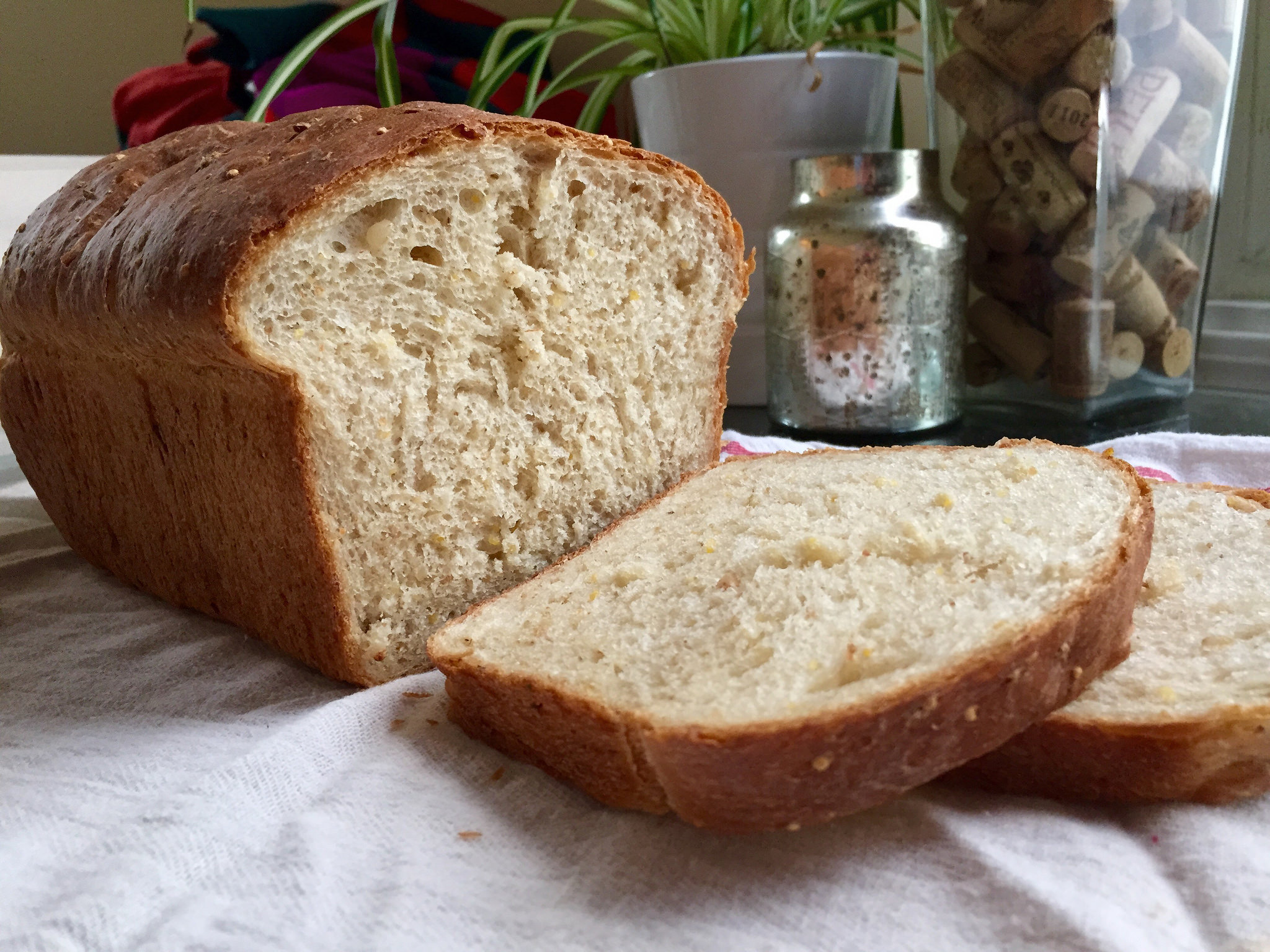The kind of bread I want to eat every day is grainy, flavorful, but neutral — something that I can slice and eat by itself, or toast, or make a sandwich. The kind of bread you’d get at the store off the shelf. But better.
This is that kind of bread.
Like the Anadama from back at the beginning of my Year of Bread, this multigrain bread starts with a cornmeal soaker. It’s not a preferment in the technical sense (no baker’s yeast), but it does help with developing flavor and softening the whole grains to make the final product better. I used a truly multigrain mix of cornmeal, quinoa, oat and rye flakes, and wheat germ. The original recipe called for wheat bran, but I made a substitution since I had a hard time finding wheat bran (and like the taste and texture of wheat germ better).
Multigrain breads usually end up being a hodgepodge of whatever’s in the cupboard, but I kind of like that about them. You could add a sprinkling of wheat bran, oats or even sunflower seeds to the top of this bread, but in general my experience has been that such things just end up falling off anyway, and this bread has enough flavor and texture that it doesn’t need any further embellishment.
Everyday Multigrain Bread
Slightly adapted from Peter Reinhart’s The Bread Baker’s Apprentice. Yields one 2 lb loaf.
Ingredients
Soaker
- 3 tbsp rolled oats, or a combination of oat and rye flakes
- 2 tbsp cornmeal
- 2 tbsp wheat germ (or wheat bran)
- 1 tbsp quinoa
- 1/4 cup water, room temperature
Dough
- 3 cup unbleached bread flour
- 3 tbsp brown sugar
- 1 1/2 tsp salt
- 1 tbsp instant yeast
- 3 tbsp cooked brown rice
- 1 1/2 tbsp honey
- 1/2 cup milk
- 3/4 cup water, room temperature
- Prep the soaker: The night before you want to make your bread, combine the dry soaker ingredients in a small bowl, then cover with water. Stir with a spoon to combine– you might want to add just a few teaspoons more water to make sure that everything is hydrated.
- Mix the dough: The next day, combine the flour, brown sugar, salt and yeast in a bowl. Add the hydrated soaker and the cooked brown rice and stir to combine, then add the honey, milk and water. The dough will be very sticky at first, so keep stirring it in the bowl and add flour as needed until it comes together — if you turn it out for kneading too soon, it will just stick to everything. After a few minutes of mixing the dough should firm up a bit and you can turn it out onto a floured surface. Knead by hand for 12-15 minutes.
- Ferment the dough: Transfer the dough to an oiled bowl and cover with plastic wrap. Let rise for about 90 minutes; the dough should double in size.
- Shape the loaf: This bread does really well in a loaf pan! Grease your loaf pan to prep, then carefully turn the dough out onto a very lightly floured surface. Gently press it into a rectangle, then roll up, pressing the seam of the loaf as you go to form a tight surface, until the dough is a neatly shaped log. Place in the loaf pan and cover with plastic wrap. Let rise for another 90 minutes; the dough will crest fully above the lip of the pan.
- Bake the bread: Preheat the oven to 350° when the bread is getting close to fully risen. When the oven is ready, place the pan in the oven on the middle shelf. Bake for about 20 minutes, then rotate the pan 180° and continue baking for 20-30 minutes. The loaf will be golden brown and sound hollow when tapped from the bottom when it’s done.
- Immediately remove the bread from the loaf pan and transfer to a rack to cool. Let cool for at least 1 hour before slicing and serving.


